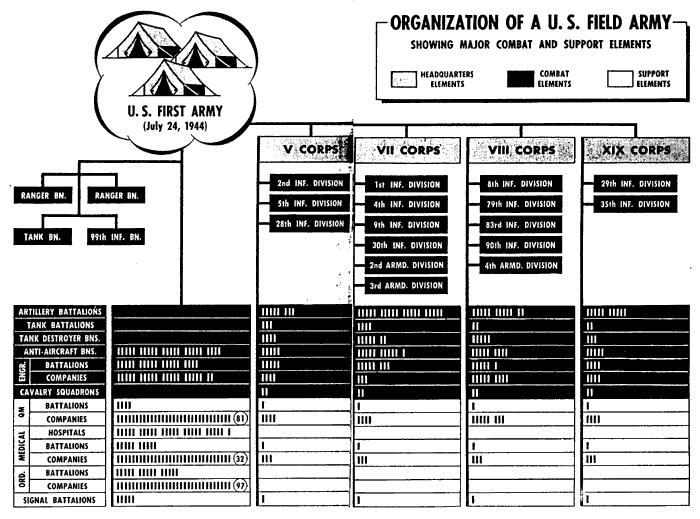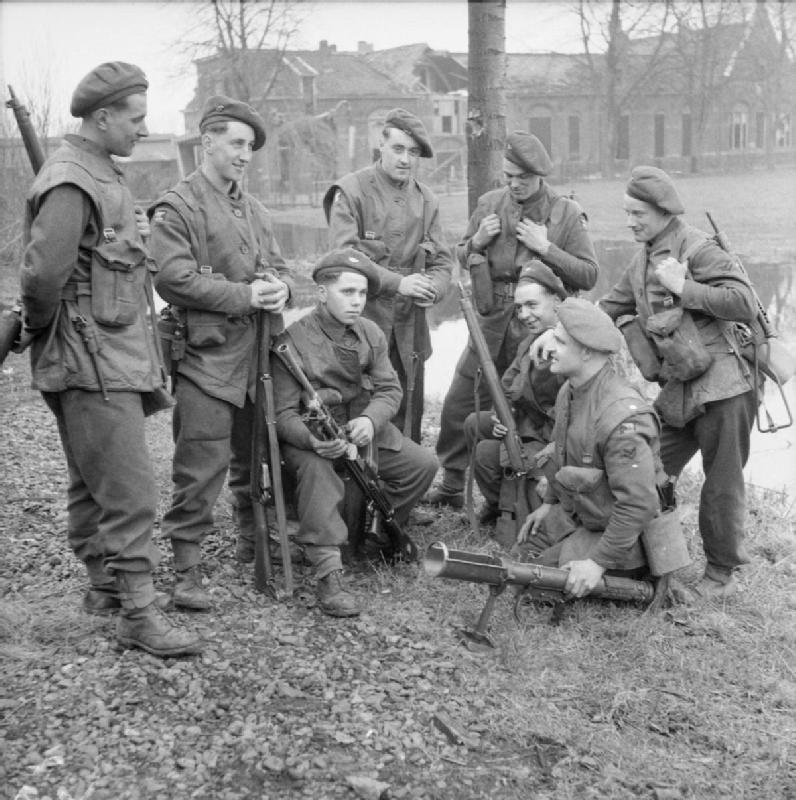

These were established across India to help maintain peace and defend rear areas. In 1940, after the Dunkirk evacuation of the British Expeditionary Force, the Nepalese government increased the Gurkha battalions’ collaboration with the British to 35. There were ten Gurkha regiments during World War II, consisting of two battalions that totaled twenty pre-war battalions. An army group plans and directs campaigns in a theater of operations, and includes two or more field armies under a designated commander.A statue in memorial of Gurkha soldiers.
 A field army combines two or more corps, with 50,000 or more soldiers, and is typically commanded by a lieutenant general or higher-ranking officer. The corps provides the framework for modern multi-national operations. It's normally commanded by a lieutenant general, who is assisted by a command sergeant major and an extensive corps staff. A corps includes 20,000 to 45,000 soldiers and is made up of two to five divisions. Divisions perform major tactical operations for the corps and can conduct sustained battles and engagements. Divisions are numbered and are assigned missions based on their structures. It can conduct major tactical operations and sustained battlefield operations and engagements. A division, with 10,000 to 16,000 soldiers, usually consists of three brigade-sized elements and is commanded by a major general, who is assisted by two brigadier generals. Armored cavalry, ranger and special forces units in this size range are called regiments or groups instead of brigades. In some cases, a brigadier general may assume command. Brigades normally are employed on independent or semi-independent operations, and normally are commanded by a colonel with a command sergeant major as senior NCO. A brigade includes 1,500 to 3,200 soldiers, and a brigade headquarters commands the tactical operation of two to five combat battalions. An armored or air cavalry unit of equivalent size is known as a squadron. A battalion can conduct independent operations, if they're of limited scope and duration, and operates its own administration. A battalion normally is commanded by a lieutenant colonel, and a command sergeant major serves as principal NCO assistant.
A field army combines two or more corps, with 50,000 or more soldiers, and is typically commanded by a lieutenant general or higher-ranking officer. The corps provides the framework for modern multi-national operations. It's normally commanded by a lieutenant general, who is assisted by a command sergeant major and an extensive corps staff. A corps includes 20,000 to 45,000 soldiers and is made up of two to five divisions. Divisions perform major tactical operations for the corps and can conduct sustained battles and engagements. Divisions are numbered and are assigned missions based on their structures. It can conduct major tactical operations and sustained battlefield operations and engagements. A division, with 10,000 to 16,000 soldiers, usually consists of three brigade-sized elements and is commanded by a major general, who is assisted by two brigadier generals. Armored cavalry, ranger and special forces units in this size range are called regiments or groups instead of brigades. In some cases, a brigadier general may assume command. Brigades normally are employed on independent or semi-independent operations, and normally are commanded by a colonel with a command sergeant major as senior NCO. A brigade includes 1,500 to 3,200 soldiers, and a brigade headquarters commands the tactical operation of two to five combat battalions. An armored or air cavalry unit of equivalent size is known as a squadron. A battalion can conduct independent operations, if they're of limited scope and duration, and operates its own administration. A battalion normally is commanded by a lieutenant colonel, and a command sergeant major serves as principal NCO assistant. 
This encompasses four to six companies and between 300 and 1,000 soldiers.A company is a tactical sized unit and can perform a battlefield function on its own. If it's armored or air cavalry, it's called a troop. If the element is an artillery unit, it's called a battery rather than a company. It's commanded by a captain with a first sergeant as the commander's principal NCO assistant. A company contains three to five platoons and a total of 60 to 200 soldiers.A platoon usually consists of three to four squads or sections. Normally, a platoon includes 16 to 44 soldiers and is led by a lieutenant with an NCO as second in command.Some units have two squads that made up a section, commanded by a staff sergeant. A squad, which is the smallest element in the Army structure, is typically made up of four to 10 soldiers and normally is commanded by a sergeant or staff sergeant.A Fire Team is comprised of 2 Riflemen, one being the Team Leader, a Grenadier, and an Automatic Rifleman used when small recon or special missions are required.







 0 kommentar(er)
0 kommentar(er)
